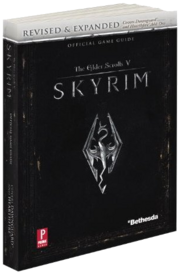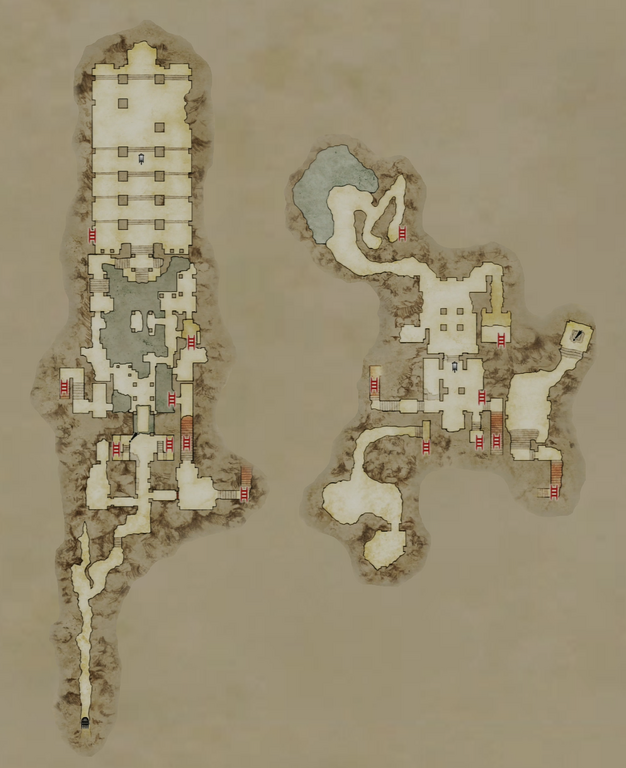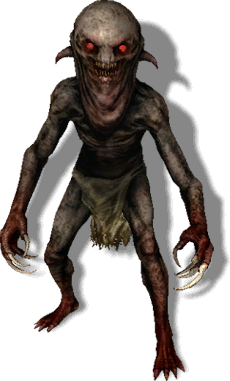...or how to get source material for your RPGs from AAA games.
Let's talk about video games for a while. While tabletop gaming has stayed more or less a niche hobby, video games have gone through quite a journey since their humble beginnings. There is no denying that video games' popularity sky-rocketed in the past decade or so. Thanks to that, AAA video game companies nowadays have budgets comparable to blockbuster movies. They spend a lot of money on writers, designers and artists. Not to mention paying for focus groups and playtesters to make sure the game is accessible and satisfying. There are a lot of creative and talented people working in the video games industry right now, making really awesome things. That's a lot of high quality art, plots, levels and other designs just waiting to be discovered.Even if you are not an AAA gamer (like myself), you can take inspiration (or simply take ready-made pieces) from those blockbuster games and use it in your campaign. You can find everything - from detailed dungeon maps, through fully fleshed NPCs, interesting monsters, adventure and quests ideas to small things like magic items and weapons. You get some inspirational quality artwork to go with this as well. If you look at it the right way - all of this is a system-agnostic source material, that can be hacked and transplanted straight into your games. Just choose a video game with a similar setting to what you are currently running and you are good to go.
Apart from the ready made content, video games can teach us a bit about good design practices. Of course, not everything will seamlessly translate to the tabletop medium, but there are some interesting video game "mechanics" we can use in our sessions.
Video game artbooks, strategy guides and (most importantly) wikis hold a plethora of content for you to choose from. Fan curated wikis are the highlight of the bunch. What they lack in art, they make up with detailed descriptions and accessibility. After all, they are available freely online. Below you'll find examples of where and what to look for when mining those sources for good inspirational content.
 Items, Weapons, Armor and all that jazz.
Items, Weapons, Armor and all that jazz.
You can always use some more clutter in your games, right? Well, wikis (especially those for cRPGs) are the to go places for findings items that will fit your campaign. Almost every wiki will have a page dedicated to showcasing the games equipment. Like the ones for Dragon Age: Origins or Skyrim. Of course the damage and prices won't translate 1:1 to your system of choice, but you get some cool art and often some flavor text - really, that's all you need to introduce some new items.
It gets even better when you want some artifacts. Unique equipment from computer games will usually have a story behind it and much cooler design.
If you are simply looking for art to either represent the item during a session or for inspiration, you can't go wrong with artbooks. They will usually have a section dedicated to equipment filled with gorgeous concept art. It is worth investing into few AAA game artbooks.
Design wise, many computer games nowadays are moving away from simply giving the player better "stuff" as the game progresses. Sure, it seems logical to give players more powerful weapons and armor every time they achieve something. The truth is, by doing so you will soon run into a power creep issues. On the tabletop side of gaming, this means that you have to make your enemies stronger to pose any challenge to the players. You are also taking away choice from the player. After all, it's a no-brainer to exchange the sword+2 with a mace+4.
To avoid that, you can experiment with Team Fortress 2 style item mechanics (as pictured above). Each of them has a strength and a weakness, so no single item is clearly better than the other. In games like that, players choose weapons based on their play style and current situation. Maybe the new crossbow is much more powerful but it is very loud, or take forever to reload? This way you allow your players to experiment with different tactics, which can be a fun experience.
Level Design, dungeons, towns...and names?.
Every game needs to take place somewhere, so why not use what's already there? When you need a dungeon or a town, you can do much worse than "borrowing" one from a video game. Heck, cRPGs and action games are basically littered with them.For maps your best bet is to go with a strategy guide. Wikis have maps here and there, but any strategy guide worth it's salt will have maps paired with detailed descriptions of what is found where. Getting few strategy guides shouldn't be a big burden, as they can be found online and in charity shops for next to nothing.
For gameplay reasons you won't find vast mega-dungeons and truly city-sprawling settlements in video games. A small dungeon or a nice looking village/town (re-skinned from a video game "city") map can be found easily, usually with some cool location names, enemy types and some vistas to go along with it. Use the whole "set" or pick and choose what you want. Try to stay away from very iconic motives, especially names. You probably have players who know what Winterhelm, Megaton or Kaer-Morhen is, but not many of them will know where the Frostmere Crypt, Cottonwood Cove or Loc Muinne comes from. So, don't be afraid to take few names and put them in your campaign - video games are filled with good location and NPC names.
Monsters and other Enemies
Steal enemies. Plain and simple. The video game monster come not only with great artwork that can be an inspiration for narration, they also have their own tactics, flavor text and possible loot drops. More than this, many video game monsters have special moves and AI. Maybe they attack in swarm and explode upon deaths? Maybe they are immune or have a weakness against certain element? All of those things can be adapted to tabletop and they make for a fight. When looking for interesting monster AI, look outside the cRPG genre. Action games have a wider variety of monster behaviors. A good source for Boss enemies are MOBAs. Each "character" in any MOBA has a set of skills that can be translated to some cool RPG attacks. Because of recent MOBA popularity you can find very detailed wikis describing them. You can easily re-skin those characters to make an interesting boss encounter.Is that all?
Not by a long shot. There is a lot more that can be mined from AAA games - NPCs, quests, subsystems, mechanics and we didn't even touched on the topic of music (game soundtracks make a great session background noise). There is also much more we can learn from analyzing the game's design choices. But this topic is way to big to fit into a blog post (and possibly my brain).Bottom line is - AAA video games must be doing something right to stay so popular, so why not use some of their content in our hobby? Thanks to fan created wikis, official artbooks and strategy guides we are given great amount of inspirational tools. So, visit some game wikis, get some cheap strategy guides from your local charity store, invest in some artbooks from games you really enjoy and mash, hack and adapt this content to RPGs!





No comments:
Post a Comment